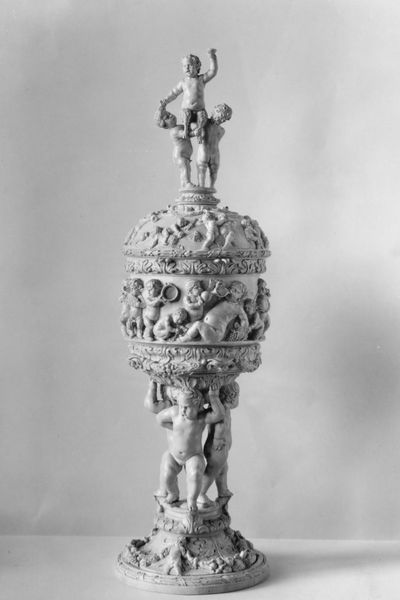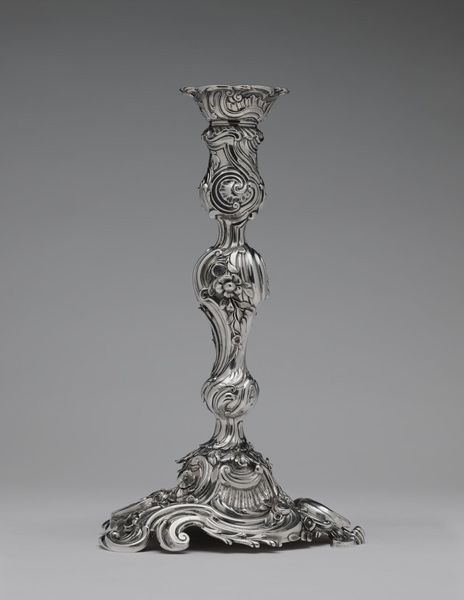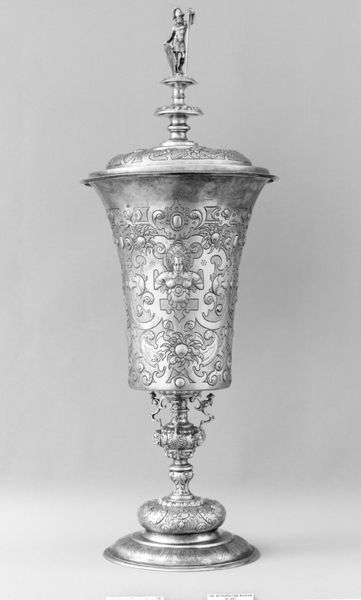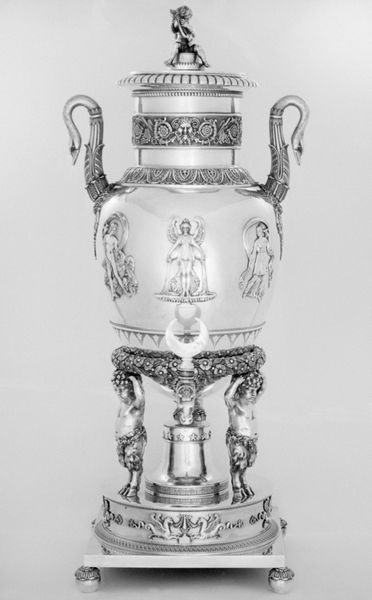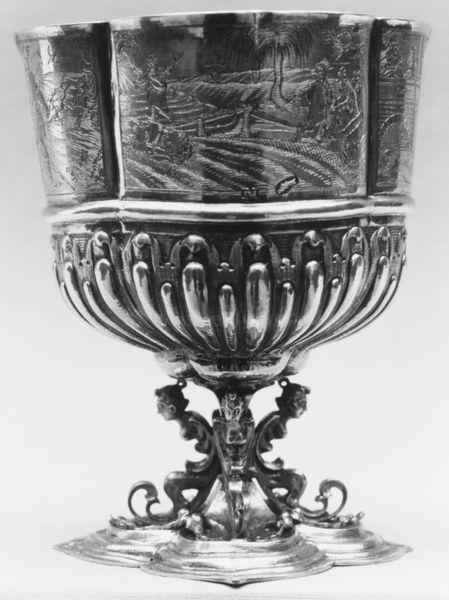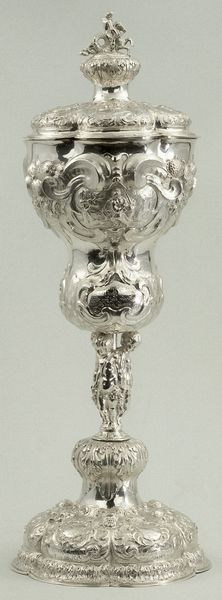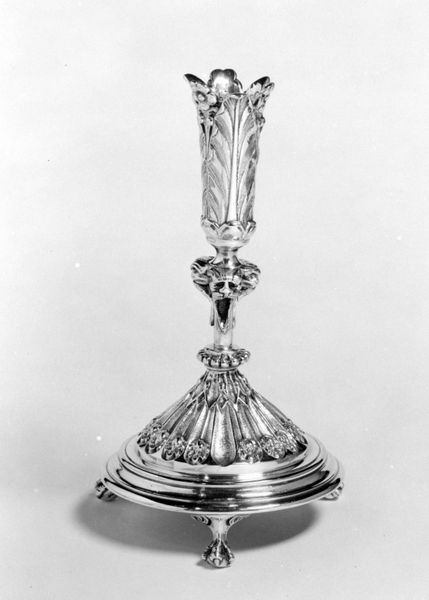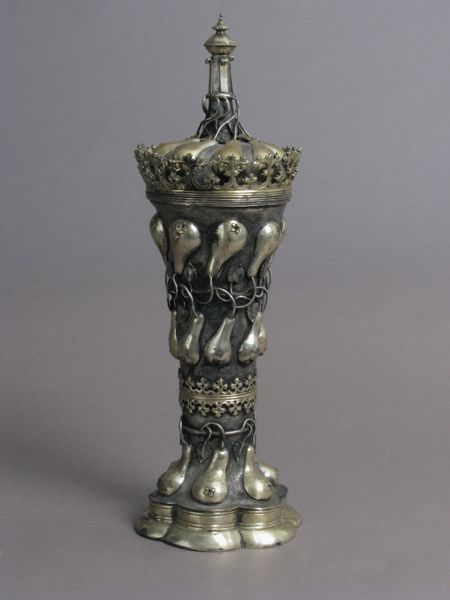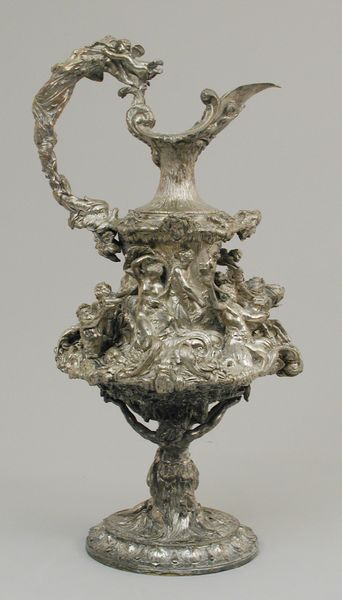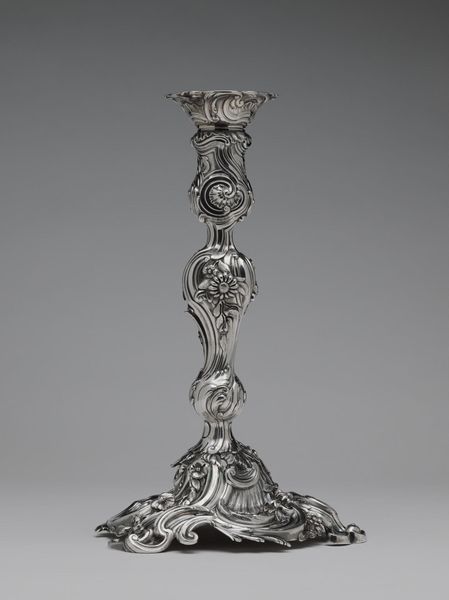
silver, metal, sculpture
#
neoclacissism
#
silver
#
metal
#
sculpture
#
geometric
#
sculpture
#
decorative-art
Dimensions: Overall: 11 9/16 × 5 3/4 in. (29.4 × 14.6 cm)
Copyright: Public Domain
Here is a chalice, made by Giovanni Valadier in the 18th century, whose silver form embodies the era's ornate aesthetic. The eye is immediately drawn to its complex, multi-layered structure. The base, stem, and cup are not merely functional; they're canvases for elaborate sculptural detail. Note how the figures of cherubs, foliage, and scrolls cover the surface, creating a dense tapestry of forms. Valadier’s chalice reflects the Baroque’s love of complexity and movement. The detailed ornamentation and curvilinear forms embody a rejection of classical simplicity in favor of dynamic visual expression. We see a play between the object's function as a religious vessel and its role as a decorative art piece. Its design challenges rigid conventions and invites new ways of thinking about the relationship between art, religion, and society. The silver material and its intricate craftsmanship are key to the chalice's meaning, serving not just aesthetics but also as a reflection of cultural values and philosophical ideas. The chalice functions as a site of ongoing interpretation and cultural discourse.
Comments
No comments
Be the first to comment and join the conversation on the ultimate creative platform.

